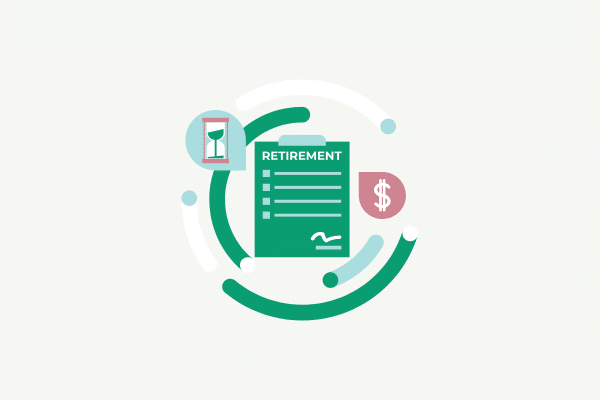
Saving for retirement gets trickier as your income grows. High-income earners often find themselves unable to contribute directly to a Roth IRA due to IRS income limits. However, there’s a way around this obstacle: the backdoor Roth IRA.
This strategy offers a legal and effective way to enjoy the benefits of a Roth IRA—such as tax-free growth and withdrawals—while bypassing income restrictions. In this article, we’ll break down how the backdoor Roth IRA works, why it’s valuable for high earners, and how Insogna CPA, one of the top accounting firms in Texas, can help you implement it seamlessly.
What Is a Backdoor Roth IRA?
A backdoor Roth IRA is a strategic method for converting non-deductible Traditional IRA contributions into a Roth IRA. It allows high-income earners to fund a Roth IRA indirectly, taking advantage of its many benefits.
Why It’s Valuable:
- Tax-Free Growth: Once converted, your investments grow tax-free, an excellent advantage for long-term savers.
- Tax-Free Withdrawals: Qualified withdrawals during retirement are tax-free, providing flexibility to manage taxable income.
- No RMDs: Roth IRAs are not subject to required minimum distributions (RMDs), unlike Traditional IRAs.
Why High-Income Earners Use Backdoor Roth IRAs
The IRS restricts direct contributions to Roth IRAs for high earners. For 2023:
- Single filers with incomes over $153,000 are ineligible.
- Married couples filing jointly are disqualified if their combined income exceeds $228,000.
Fortunately, there are no income limits for contributing to a Traditional IRA or for converting those funds to a Roth IRA. This loophole is what makes the backdoor Roth IRA strategy so effective.
At Insogna CPA, an Austin, TX accountant team with deep expertise in retirement planning, we’ve helped many clients leverage this strategy to maximize their savings while staying compliant with IRS rules.
How to Implement a Backdoor Roth IRA
Here’s a simple, step-by-step process for executing a backdoor Roth IRA:
Step 1: Contribute to a Traditional IRA
Open a Traditional IRA and make a non-deductible contribution. For 2023, the annual contribution limit is $6,500 ($7,500 if you’re 50 or older).
- Pro Tip: Complete the conversion quickly to avoid any taxable gains in the Traditional IRA.
Step 2: Convert to a Roth IRA
Once the funds are in the Traditional IRA, convert them to a Roth IRA. Since the initial contribution was non-deductible, the tax liability on the conversion is minimized.
- Timing Is Key: The sooner you convert, the fewer taxable earnings the funds will generate.
Step 3: Manage Taxes (If Applicable)
If you’ve earned income on the contributions before converting, those earnings will be subject to income tax. However, if you act quickly, the tax impact should be negligible.
Navigating the Pro-Rata Rule
While the backdoor Roth IRA is straightforward, the pro-rata rule can complicate things if you have other pre-tax IRA balances. This rule requires you to calculate the taxable portion of your conversion based on the ratio of after-tax contributions to your total IRA balance.
For example:
- If you have $50,000 in pre-tax IRAs and make a $5,000 after-tax contribution, only 10% of the conversion will be tax-free.
Work with a CPA to minimize the tax impact. At Insogna CPA, a leading accounting firm in Austin, we handle the calculations and ensure that the strategy aligns with your financial goals.
Benefits of a Backdoor Roth IRA
1. Tax-Free Growth
Once converted, the Roth IRA offers tax-free investment growth, which can significantly boost your retirement savings over time.
2. Tax Diversification
Having a mix of taxable, tax-deferred, and tax-free retirement accounts gives you flexibility to optimize withdrawals and minimize taxes in retirement.
3. Avoid RMDs
Unlike Traditional IRAs, Roth IRAs aren’t subject to required minimum distributions, allowing your funds to grow untouched for longer.
4. Estate Planning Advantages
Roth IRAs allow heirs to withdraw funds tax-free, making them an excellent tool for generational wealth transfer.
Is a Backdoor Roth IRA Right for You?
This strategy is ideal for:
- High-income earners who exceed the IRS income limits for direct Roth IRA contributions.
- Entrepreneurs and professionals maximizing other retirement accounts, like 401(k)s.
- Individuals seeking tax-free growth and flexibility in retirement.
If you have pre-tax IRA balances, consider consulting with a personal CPA in Austin to evaluate whether the pro-rata rule impacts the strategy’s benefits.
How Insogna CPA Helps
At Insogna CPA, one of the most trusted Austin CPA firms, we specialize in helping high-income earners implement advanced retirement strategies like the backdoor Roth IRA.
- Personalized Planning: Our team ensures this strategy aligns with your broader financial goals.
- Pro-Rata Rule Expertise: We handle the complexities of calculating taxable conversions for clients with existing IRA balances.
- Compliance and Reporting: Proper documentation is critical, and we ensure every step is IRS-compliant.
Take Action: Maximize Your Retirement Savings
The backdoor Roth IRA is one of the most effective tools for high-income earners looking to save more for retirement. By understanding how this strategy works and partnering with experts, you can unlock tax-free growth, enjoy flexibility in retirement, and ensure your savings work as hard as you do.
Ready to secure your financial future? Contact Insogna CPA, an experienced tax advisor in Austin, today. Let us help you turn the backdoor Roth IRA into a cornerstone of your retirement plan!
